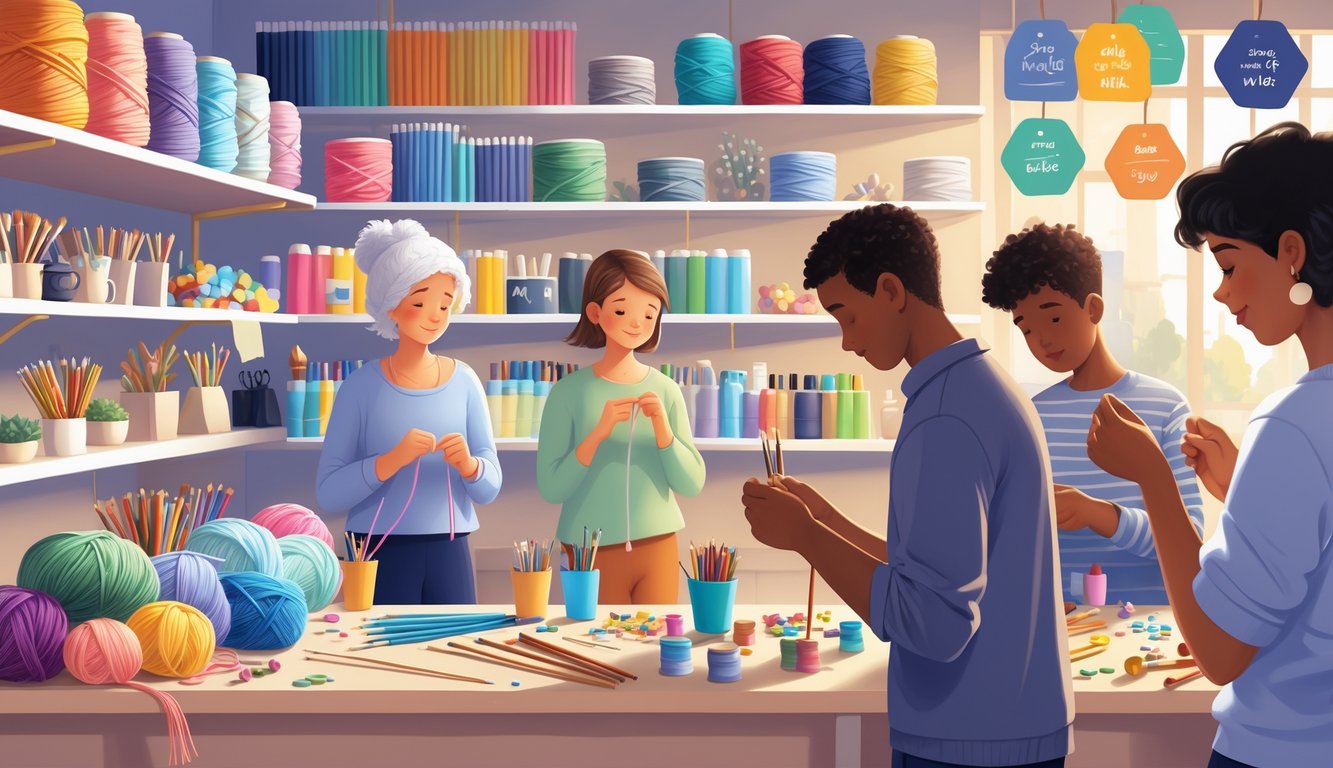
The Impact on Resin Crafting and Mixed Media Art
Here’s the secret: resin and mixed media cost creep isn’t about the big stuff. It’s the pigment that was $6 yesterday, now $9.25. It’s the epoxy bottle that shrank and nobody bothered to warn me. Makers notice first, the rest of us just hope for a sale.
Resin Crafting Supplies
Bought a gallon of resin last spring—now it’s not just the price, it’s “wait, is this even the same formula?” Watered down, weird filler, who knows. Used to get gloves with the kit, now they’re thin plastic and don’t fit. I tossed a batch after a forum called the supplier a “hydrolyzed disaster.” No recall, just word of mouth and crossed fingers. ArtResin and Pro Marine swear their stuff won’t yellow, but every batch needs a test pour, and nobody refunds ruined projects. ArtResin’s pricing guide claims leaders hike prices before holidays. So “seasonal offer” just means “pay more.”
Creative Project Costs
Three months ago, $18 per sheet for laser-cut birch. Now? No clue—shipping’s nuts, delivery takes forever, and pigments disappear from the catalog. One distributor just stopped selling teal. Hobbyists blame “supply chain,” wholesalers blame “labor.” Mixed media’s a mess—everyone’s using five materials per piece, and every layer cuts into profit. Craft Resin says geode art should cost more (and yeah, malachite flakes are crazy expensive), but buyers get sticker shock. Should I skip the mica? Hide glitter under varnish? Who knows.
Epoxy and Painting Products
Epoxy’s a joke. “UV resistant,” but my last river table yellowed in five weeks. Nobody talks about the “project abortion tax”—that’s $30 in ruined resin, gone. Artworks Resin lists material costs, but nobody adds the “pried-off disaster” fee. Premium resin isn’t just the resin: it’s cups, sticks, gloves, drop cloths, alcohol, silicone mats. I spent $20 on tools for one wall panel. Ruined an acrylic pour last month, called it “texture.” Art show buyers loved it. Apparently “intentional chaos” sells? Go figure.
How Shipping Policies Affect Craft Supply Prices
You notice the paintbrush price hike before the news even mentions tariffs or fuel surcharges. My neighbor blames “free shipping,” scrapbookers blame fuel. I tried tracking it—sometimes the real cost is hidden in shipping fine print, not materials.
The Influence of Free Shipping and Fast Shipping
Free shipping? Somebody pays, and it’s not the CEO. I watched felting wool creep up two bucks in a season and everyone blames “inflation,” but one seller admitted their “free shipping” perk added 6% to every item. Didn’t stop people demanding two-day delivery. Fast shipping is a curse—Etsy sellers buy expensive mailers from halfway around the world, and even unbranded crochet hooks feel weirdly fancy. Shipping delays and route chaos get ignored, but I swear, shipping speed premiums kill margins faster than the December rush. Value packs turned into mystery bags when vendors switched to cheaper routes. One day you’re looking for origami paper, the next your package tours the world before showing up with a “Sorry!” sticker.
Shipping Surcharges and Regional Variances
Shipping surcharges are sneaky. I watched popsicle sticks and embroidery hoops jump in price overnight—“transportation logistics,” whatever that means. Midwest retailers say costs change daily, depending on which port’s a mess. Tariff delays and extra fees make glue companies split shipments just to dodge regional spikes, but then they get double-charged anyway.
Comparative rate tables? Useless. The second a truck breaks down, it’s all out the window. My basket order sat at customs for two weeks—surcharges, misrouting, always something. Weirdly, coastal stores sometimes have cheaper paints in winter. Makes no sense, but that’s how it goes. No logic, no fairness, just random upticks.
Brand Loyalty and Customer Service in a Shifting Market
Price tags bug me less than brands that ghost you after checkout. “Thanks for your order!” emails don’t count. Suddenly loyalty programs “upgrade,” and returns or refunds become a gamble.
The Role of Customer Service
Is it the hold music or the robotic chatbots? Calling customer support about missing floss feels like shouting into a void. Big brands love to talk about “community,” but EY says almost 90% of people care more about value and empathy than brand names.
So I remember the indie shop down the street—the one that literally knows my fabric swatch by smell. They call if a dye lot changes. Real trust isn’t built during sales; it’s in those “Oh, let’s fix this now” moments. Forbes says marketers don’t get how much simple, reliable help matters.
Meanwhile, email surveys and “How did we do?” popups just get deleted. If they’re not listening, no amount of loyalty points makes me feel welcome, and one bad customer service call? Loyalty gone.
Return Policies and Guarantees
Oh man, return policies—don’t get me started. Why does buying a $3 seam ripper require a digital scavenger hunt and a “processing fee” that’s half the price? In, what, 2008, you’d just walk in, flash a receipt, and walk out with a replacement, no drama, no QR codes, no weirdly aggressive fine print. Now? Feels like every week, the rules change. Or maybe I’m just getting old and cranky. Chainstoreage claims over half of us only buy brand names if there’s a sale, so what’s the point of a “guarantee” if nobody trusts it anyway?
Octopus Energy (not a craft shop, but whatever) actually gets it—they answer fast, keep prices clear, and don’t pull “gotcha” surprises. Their customer numbers exploded, which, shocker, happens when you treat people like people. (Here’s the BritWealth Octopus case if you care.) Craft shops? They forget that even a half-decent guarantee keeps folks loyal. Just put it on the wall, right next to the overpriced washi tape.
My own last attempt at a return? Watercolors, wrong label, the works. The store clerk barely looked up, just mumbled, “Email head office.” I did. Weeks—literal weeks—went by, and I spent more shipping it back than the refund. That’s not a guarantee, that’s a punishment. And yet, the local shop down the street? I brought in some dead glue sticks. No receipt, no fuss, just a “here, take these” and a rant about the upcoming quilt show. That’s the vibe I want.



